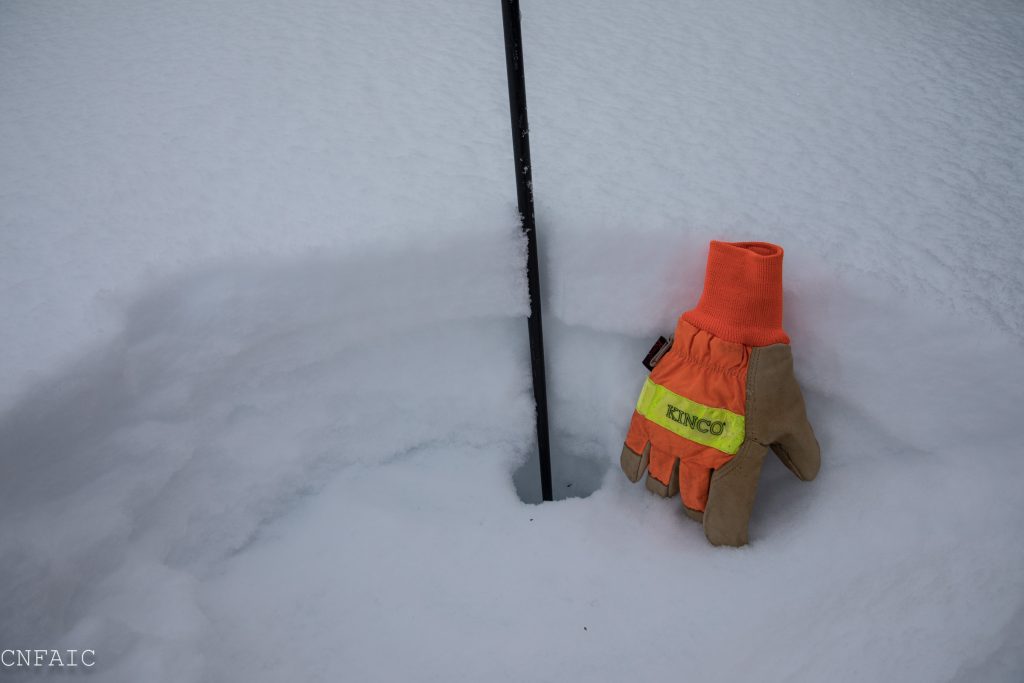Turnagain Pass
|
|
The avalanche danger has risen to CONSIDERABLE for Turnagain Pass, Girdwood, Placer Valley and the Seward zone due to strong winds and a mix of rain and snow. Above 1000′ triggering storm slabs up to 1′ thick is likely on slopes steeper than 35 degrees today. Below 1000′ loose-wet avalanches are possible. Careful snowpack evaluation, conservative decision-making, and cautious route-finding are essential.
PORTAGE VALLEY: Natural avalanches are possible today in steep channeled terrain and could entrain wet snow in the lower elevations. Avoid places with significant avalanche terrain above like Byron Glacier Trail. In addition Portage Lake could be pretty dangerous this weekend due to thin ice, above freezing temperatures and rain.
JOHNSON PASS/SUMMIT LAKE ZONE: There is a shallow snowpack with a generally poor structure. Strong winds and new snow will be adding stress to the snowpack. In addition to storm slabs more uncertainty exists for triggering a deeper avalanche in an older layer of the snowpack.
- If you’re headed to Alyeska on Saturday, bring your avalanche beacon. Backcountry Access (BCA) and Alyeska Ski Resort will have a beacon training park set up all day on March 9, March 23, and April 6. Check in at any Ski Patrol station or visit the Snow Report for the location of the search park.
- Heading to Hatcher Pass? Be sure to check out the Hatcher Pass Avalanche Center mid-week snow and avalanche summary HERE.





